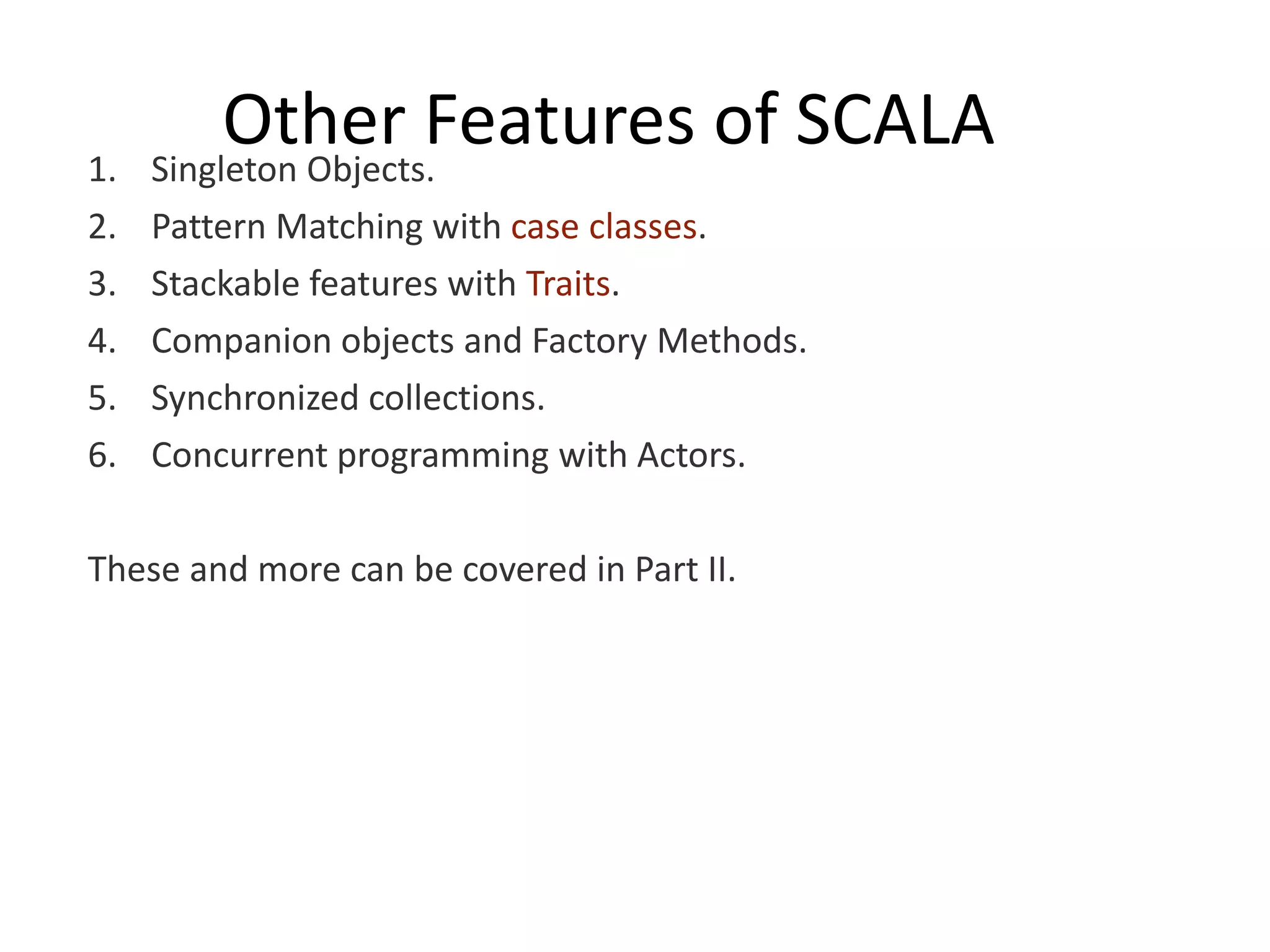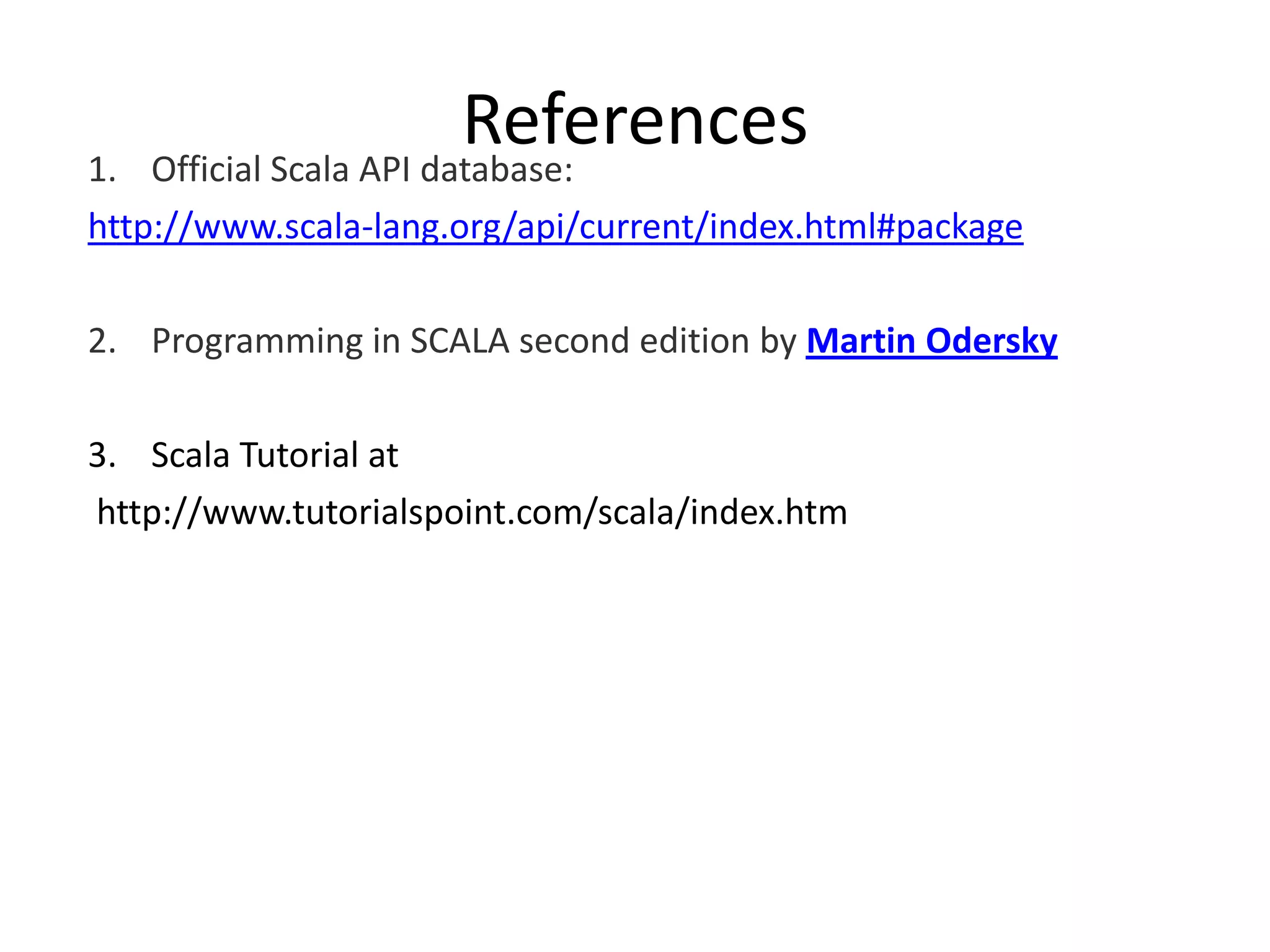Scala is a general purpose programming language that blends object-oriented and functional programming. It is designed to interoperate with Java code, as Scala compiles to Java bytecode. Scala incorporates features from functional programming like immutable variables and higher-order functions, as well as object-oriented features like classes and inheritance. Key differences from other languages include its support for features like pattern matching, traits, and type inference.

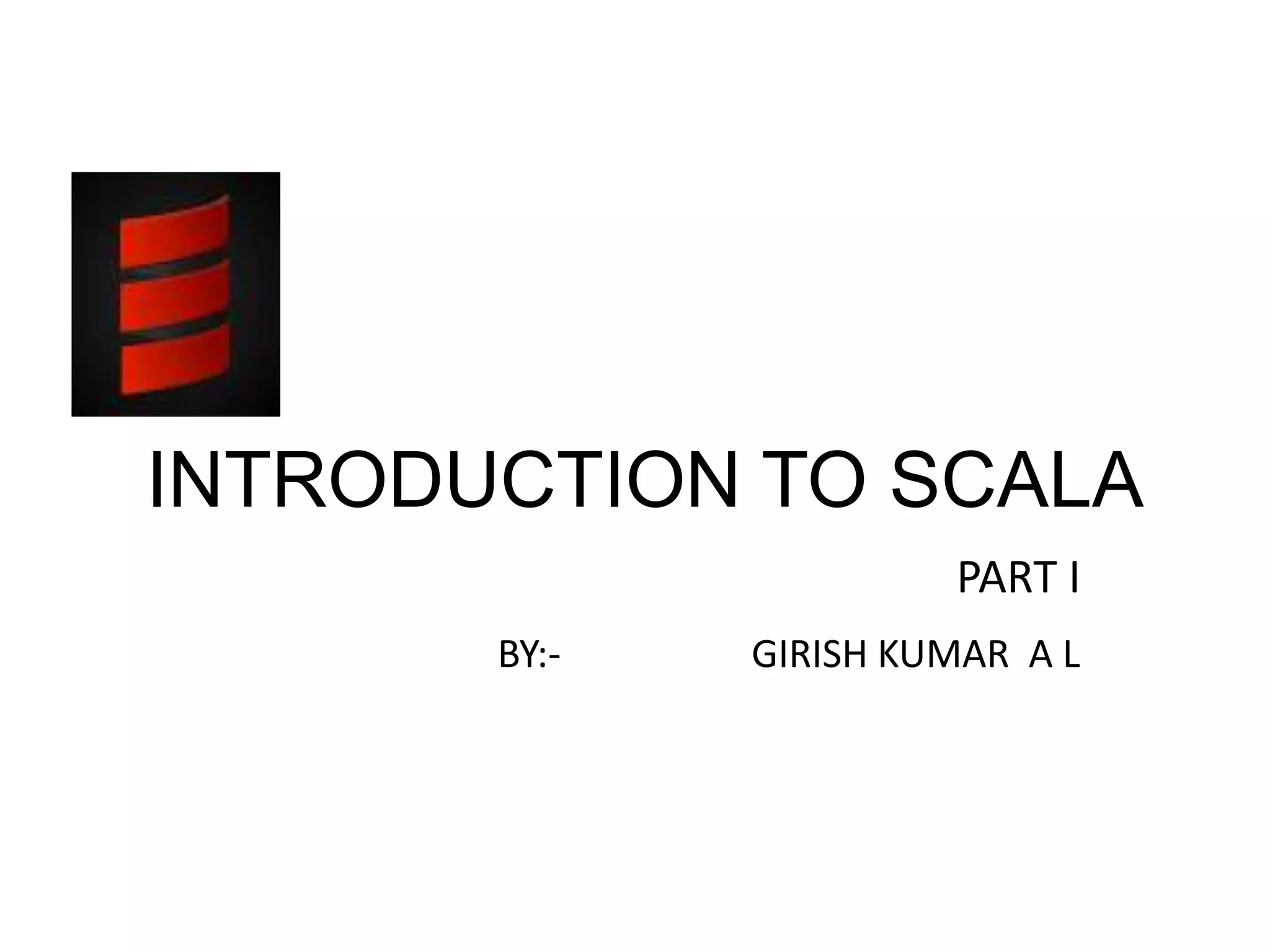
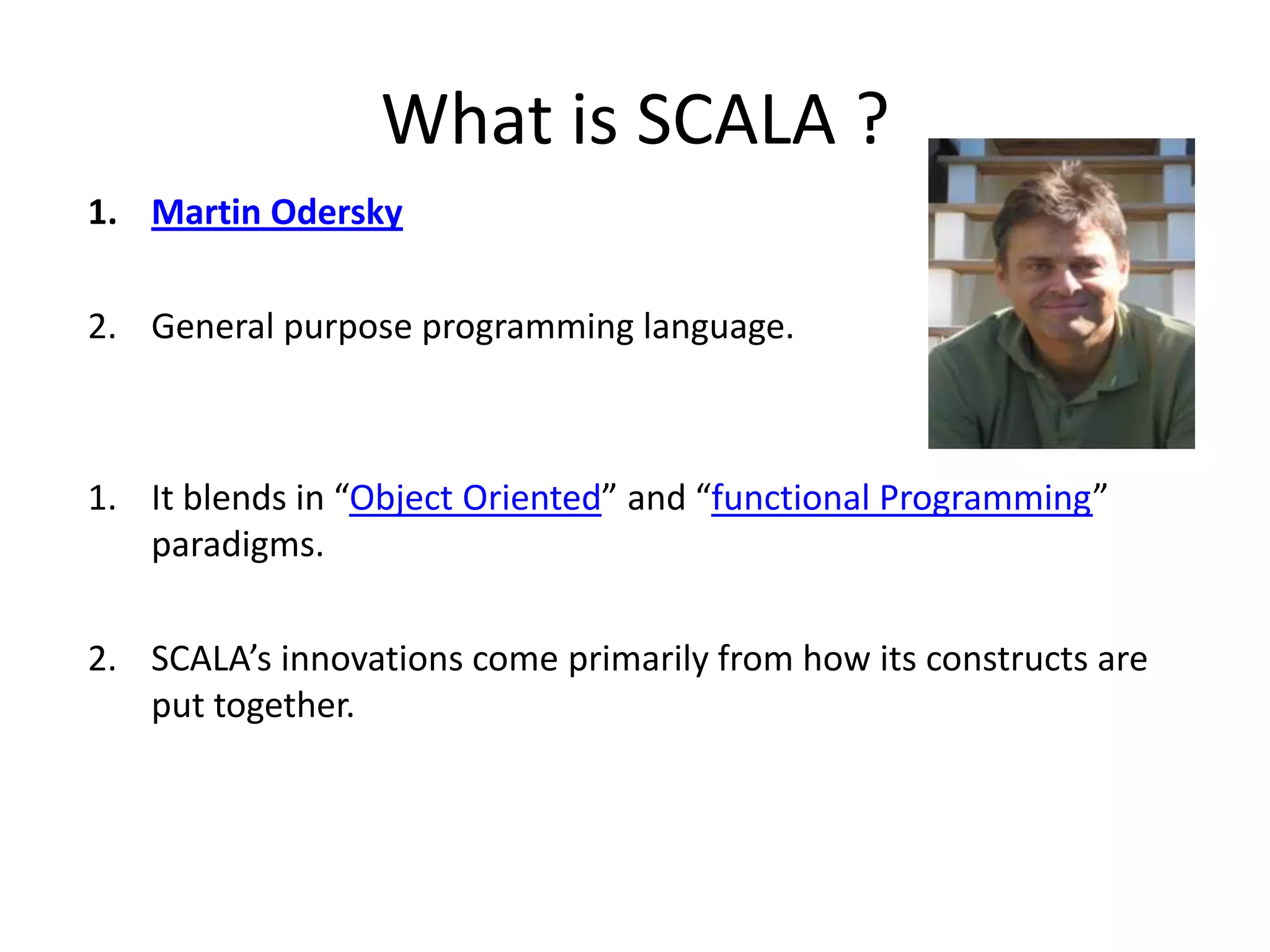
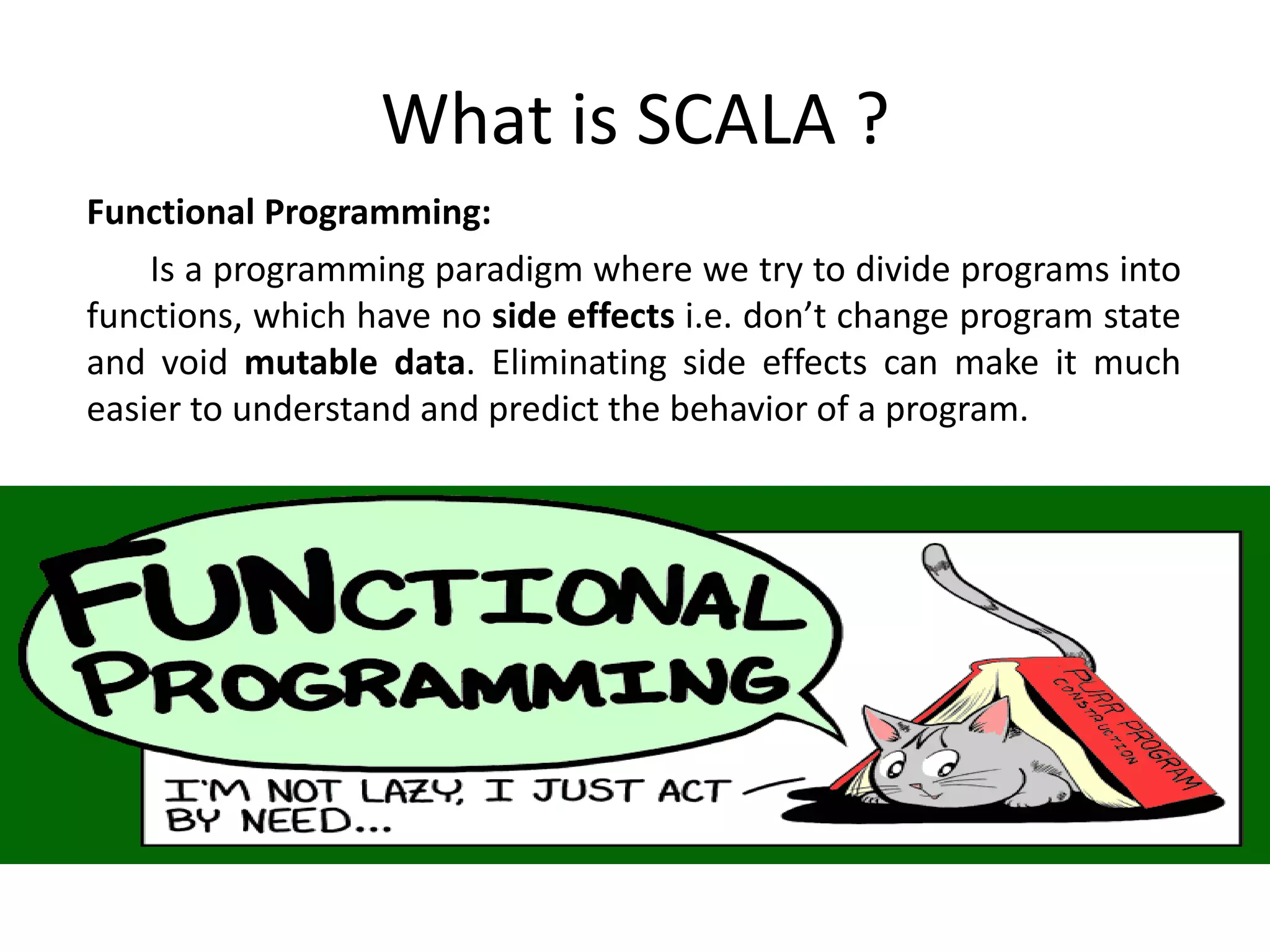
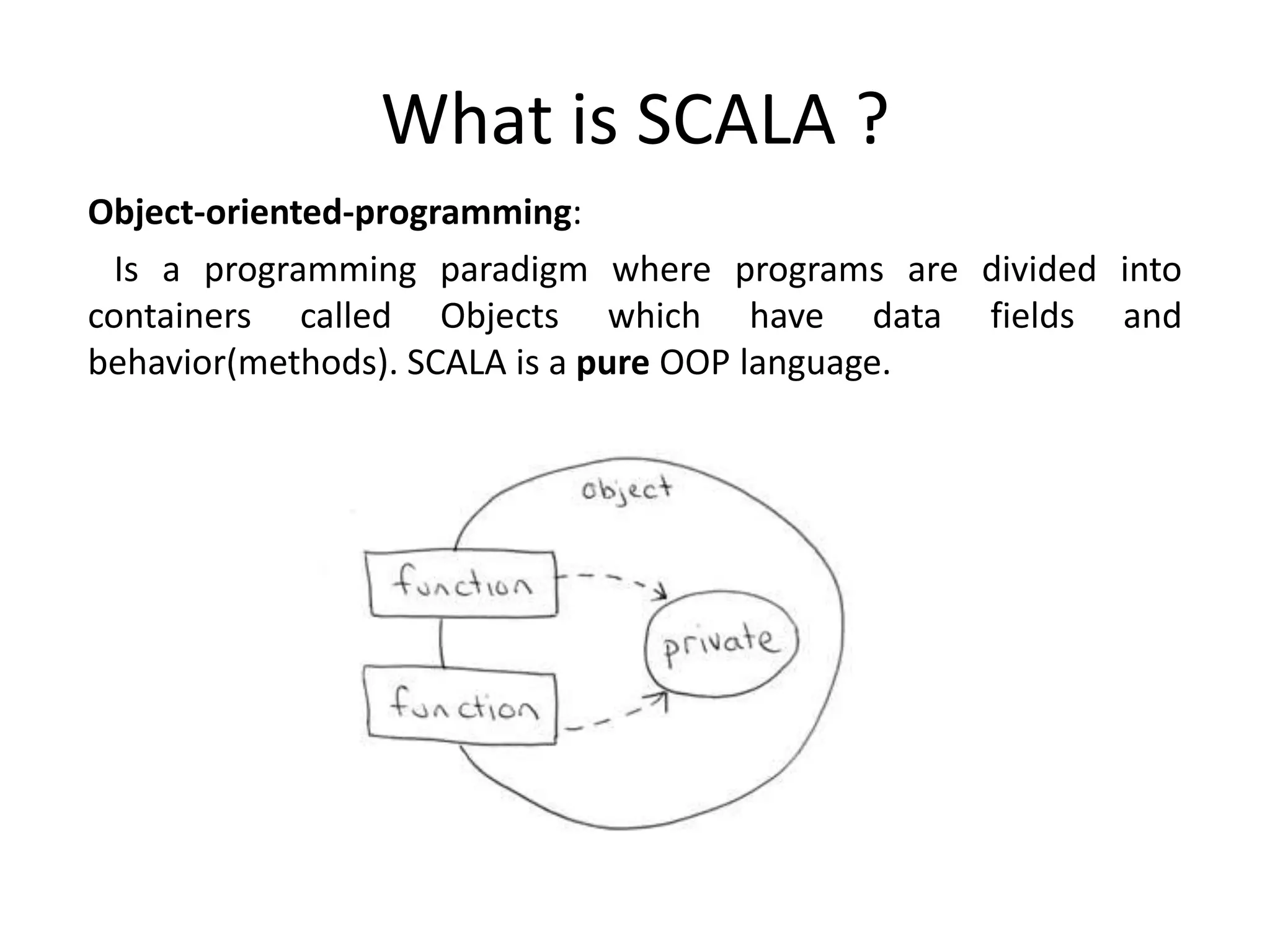
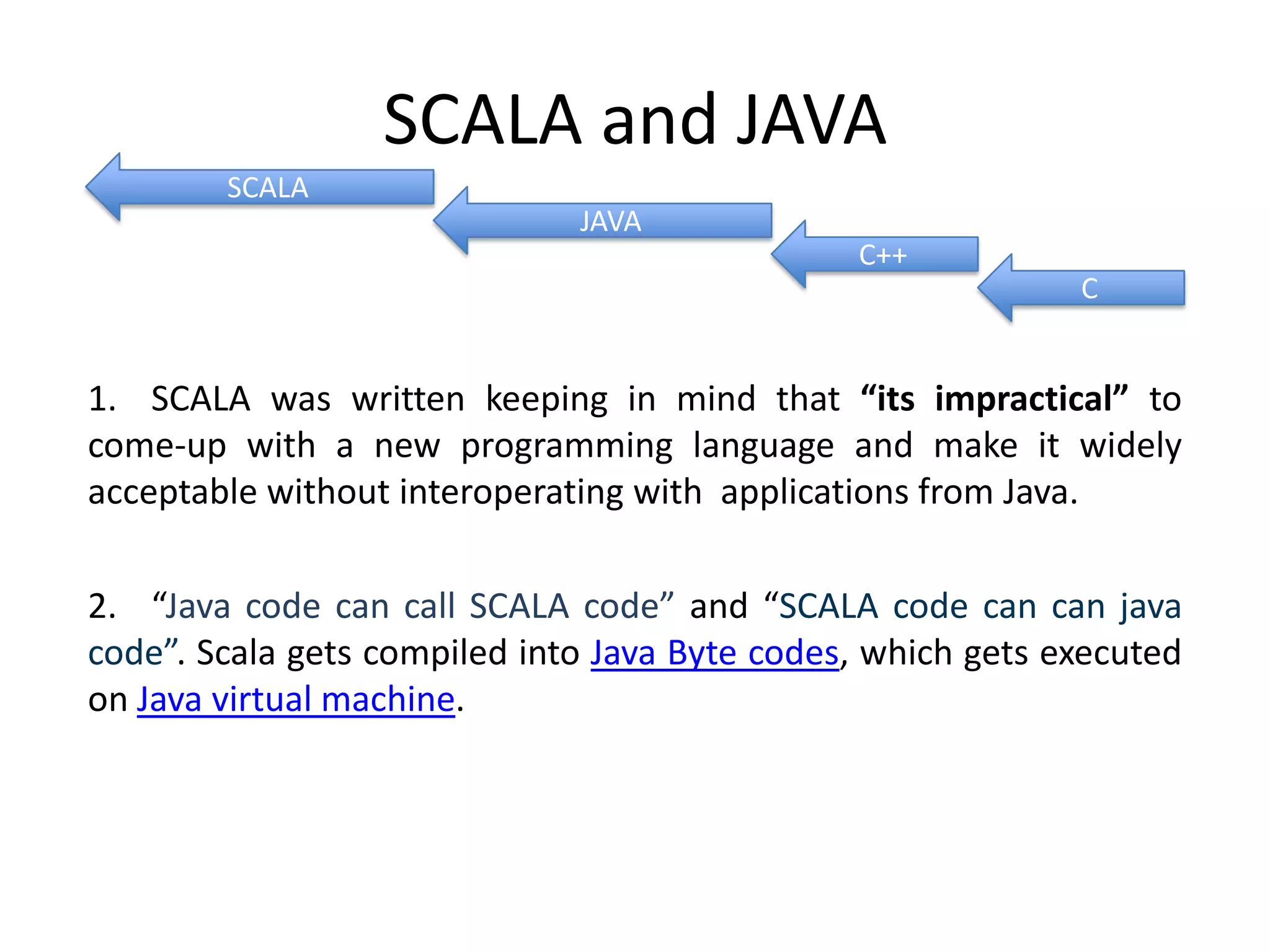
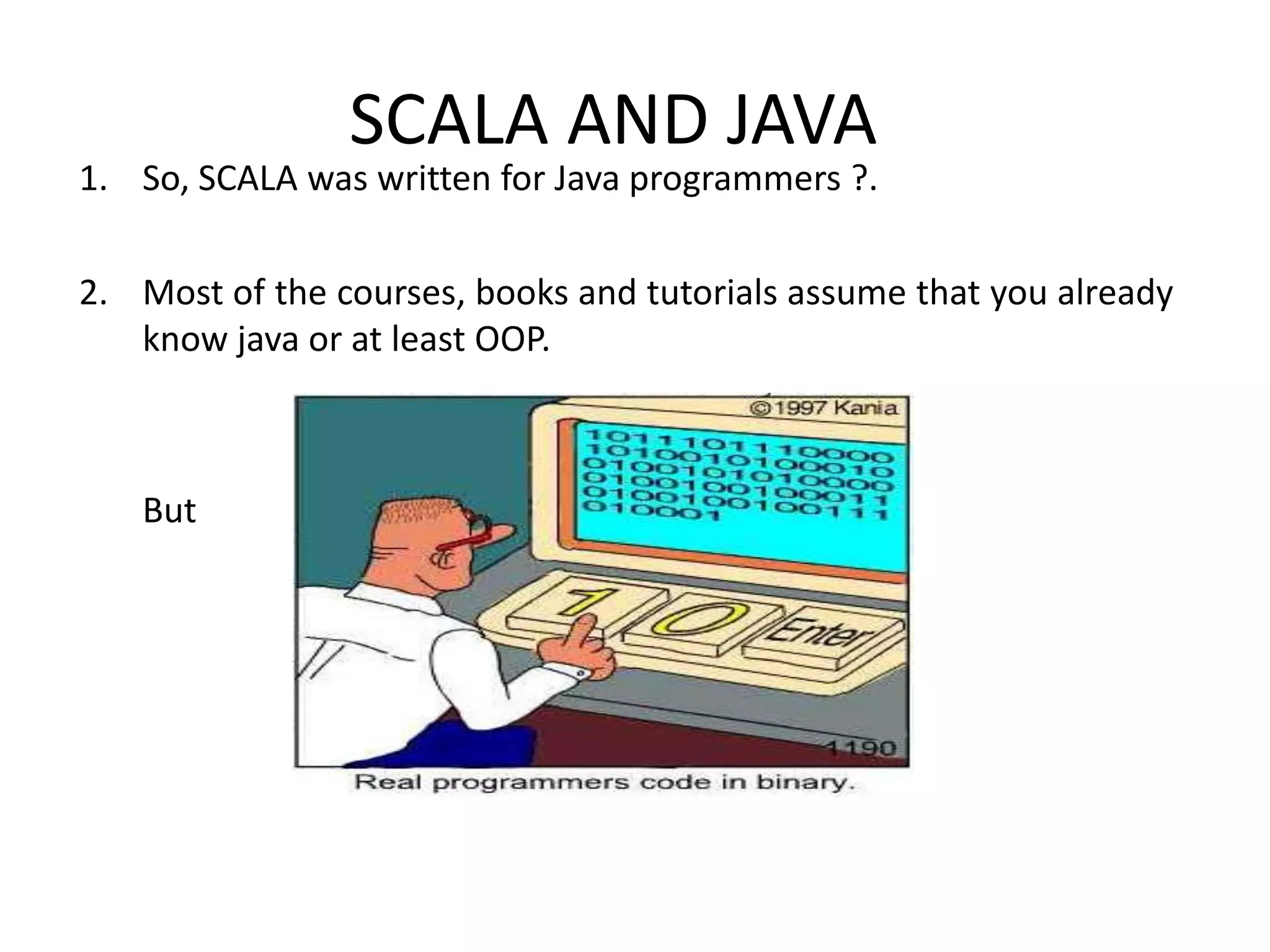
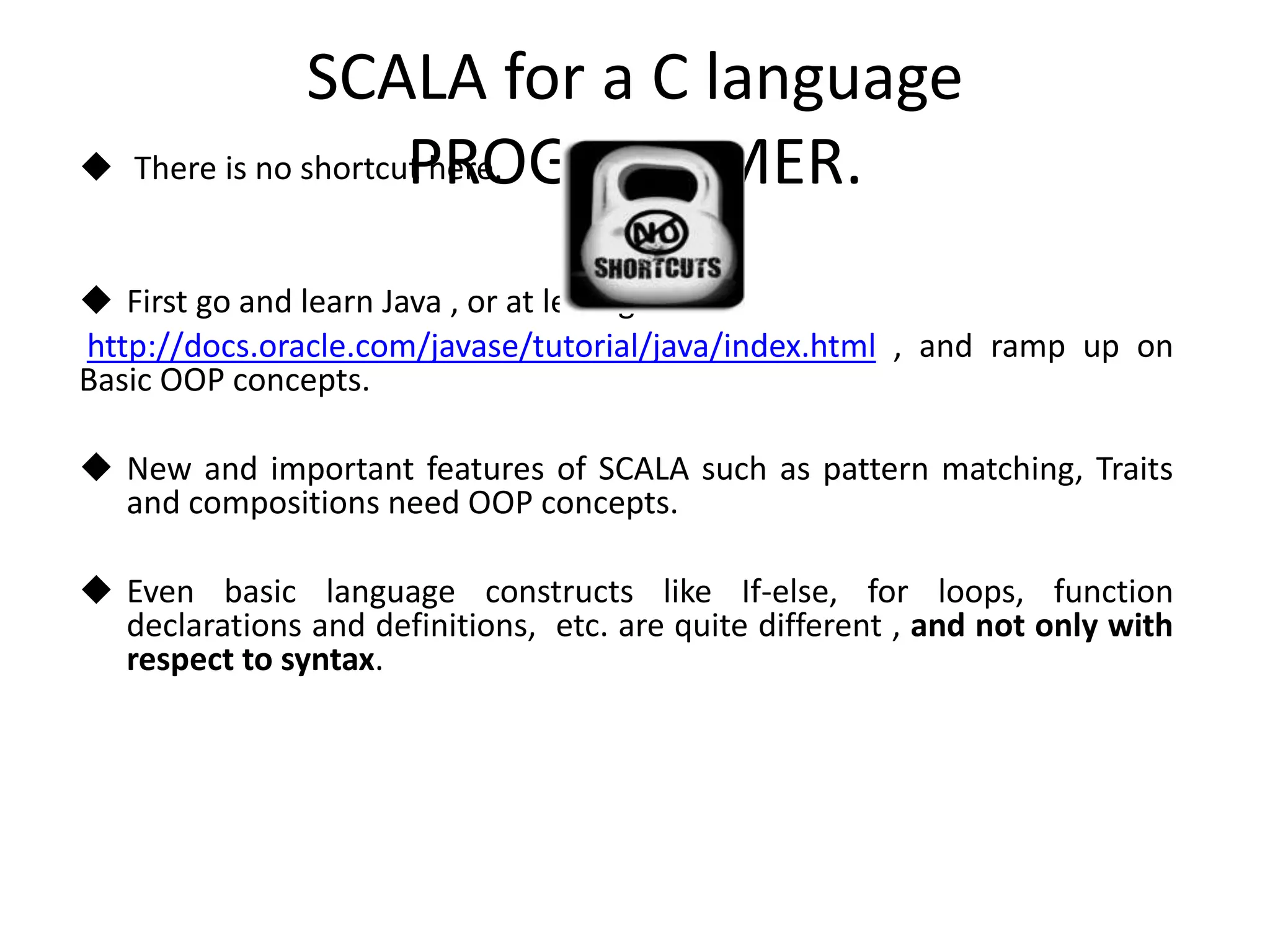
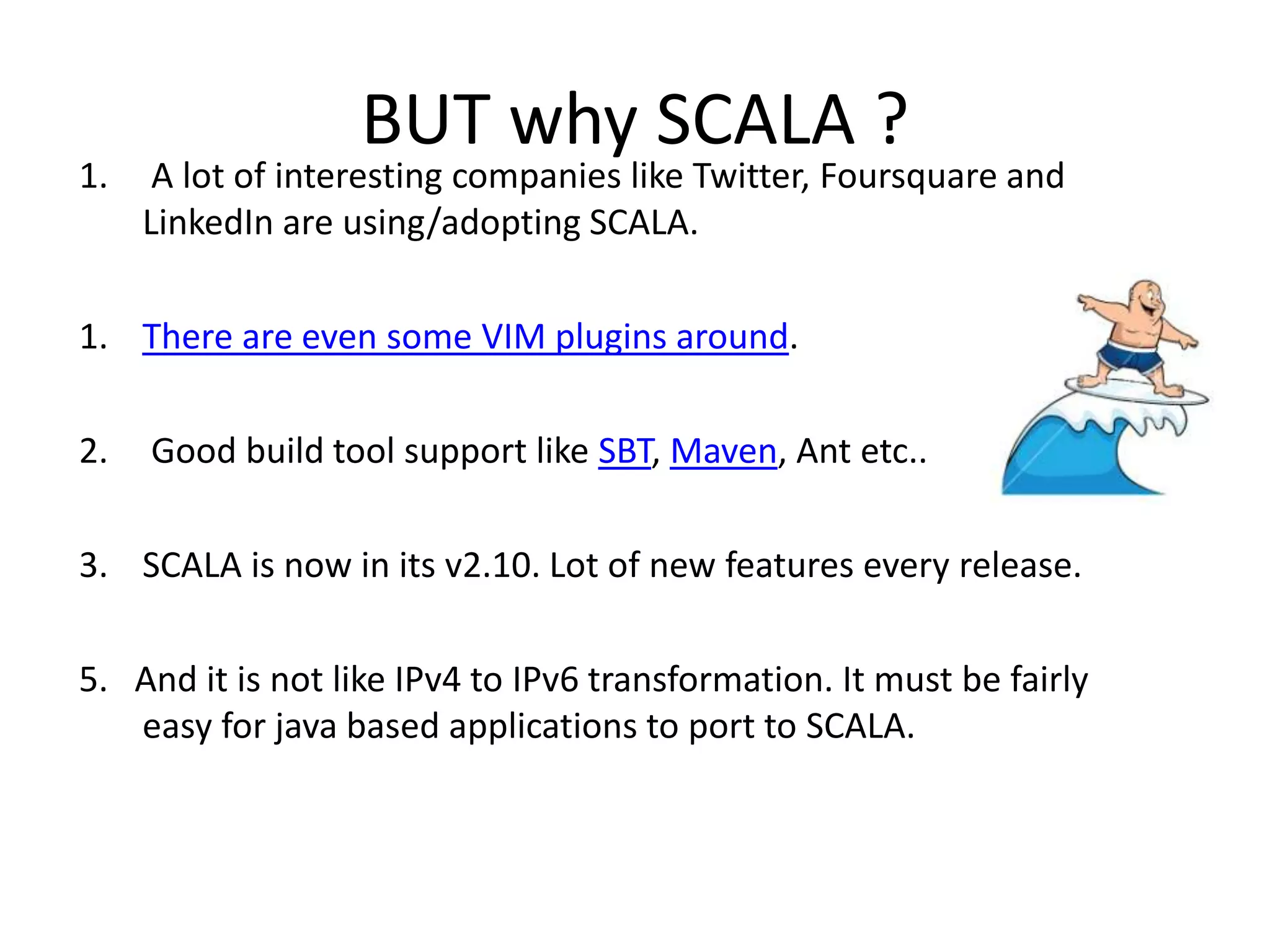
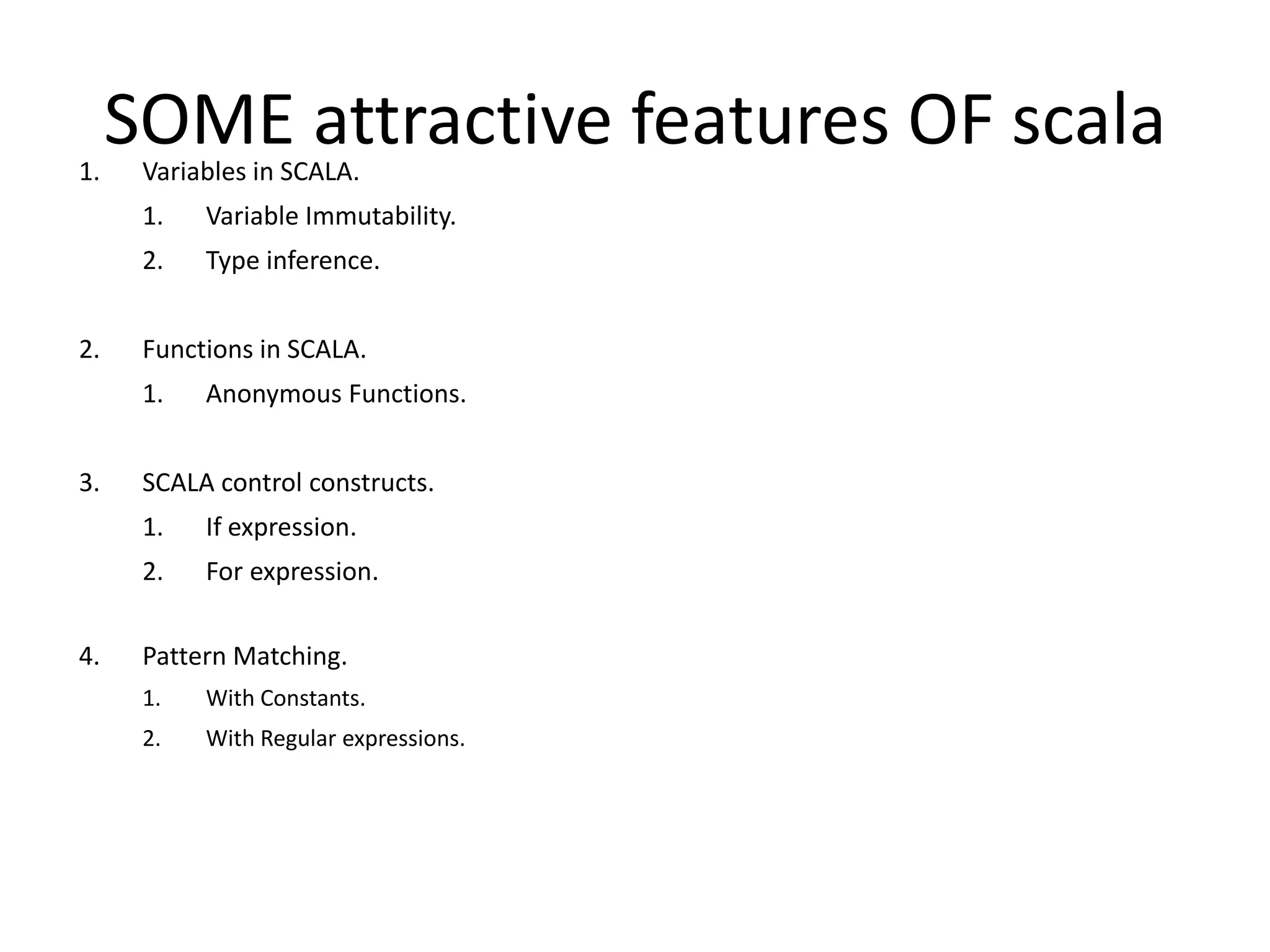
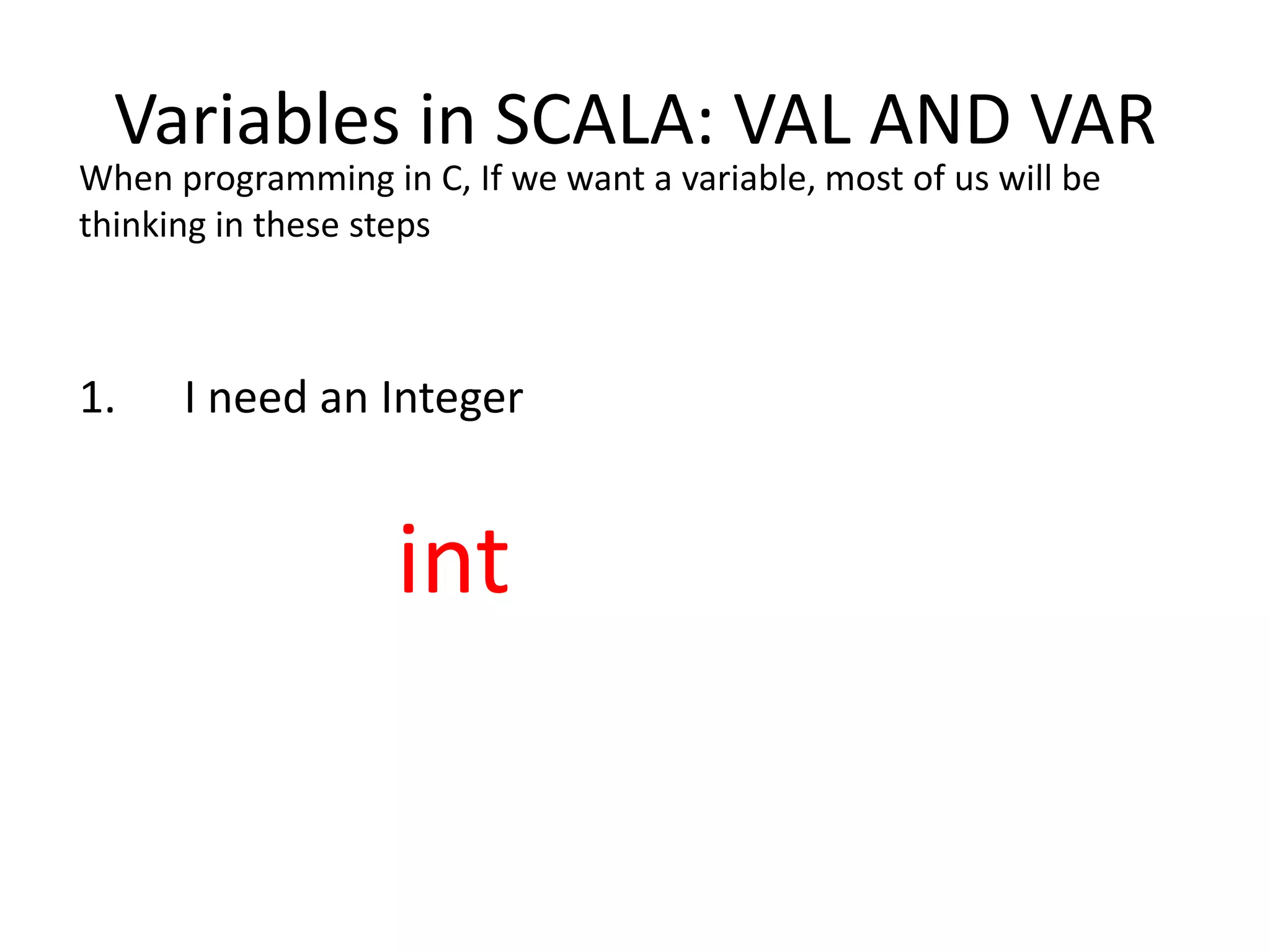
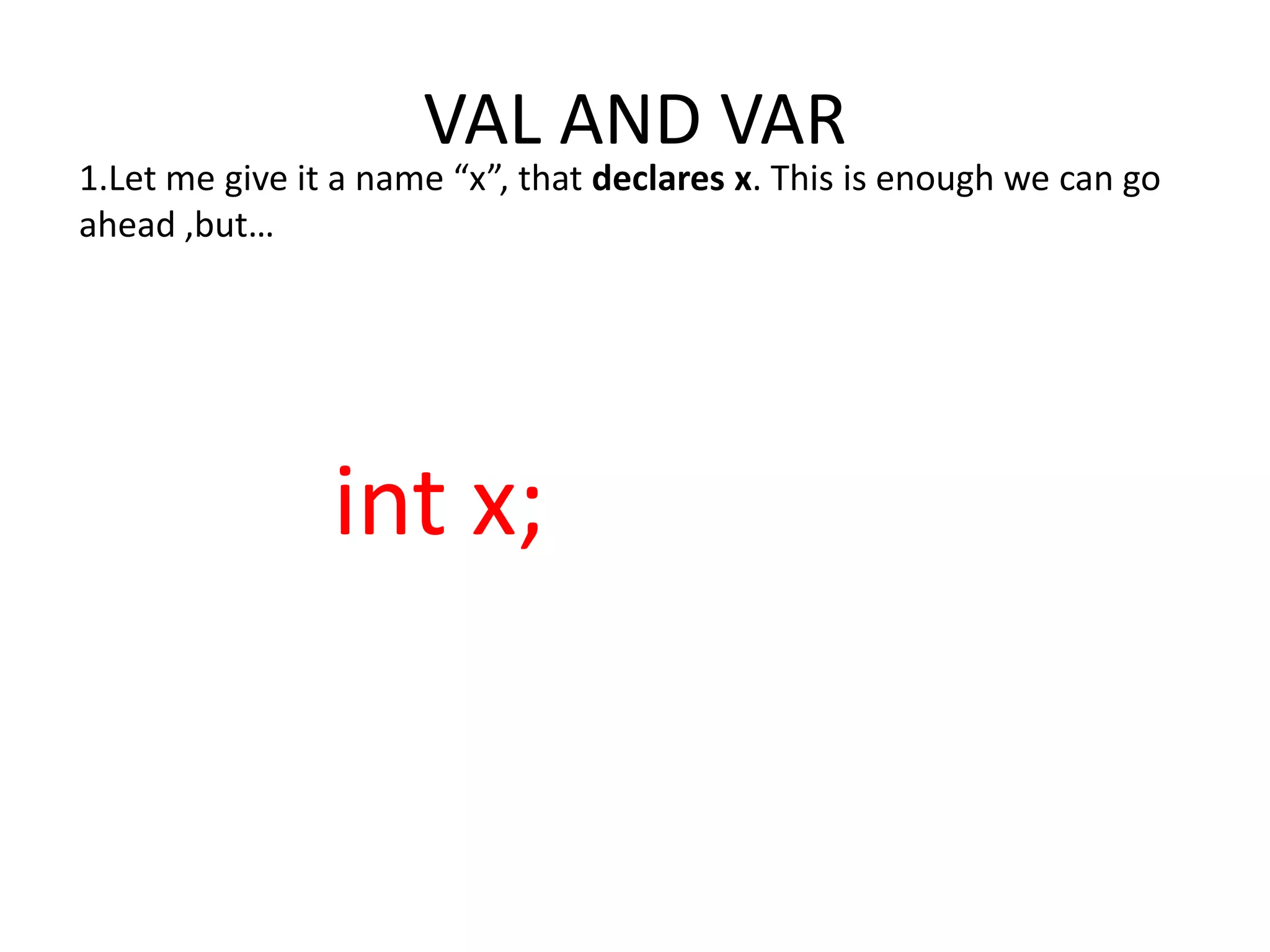
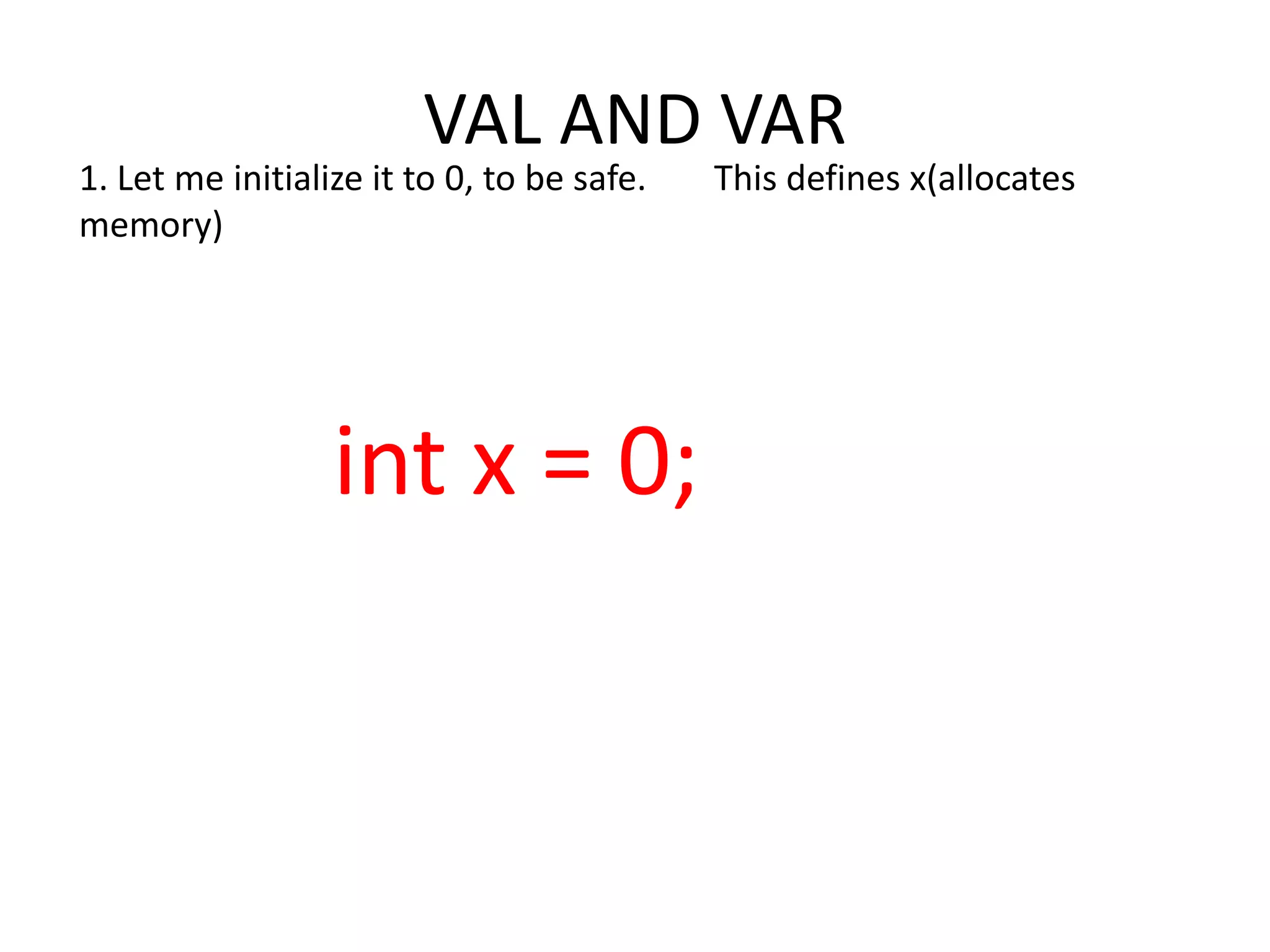
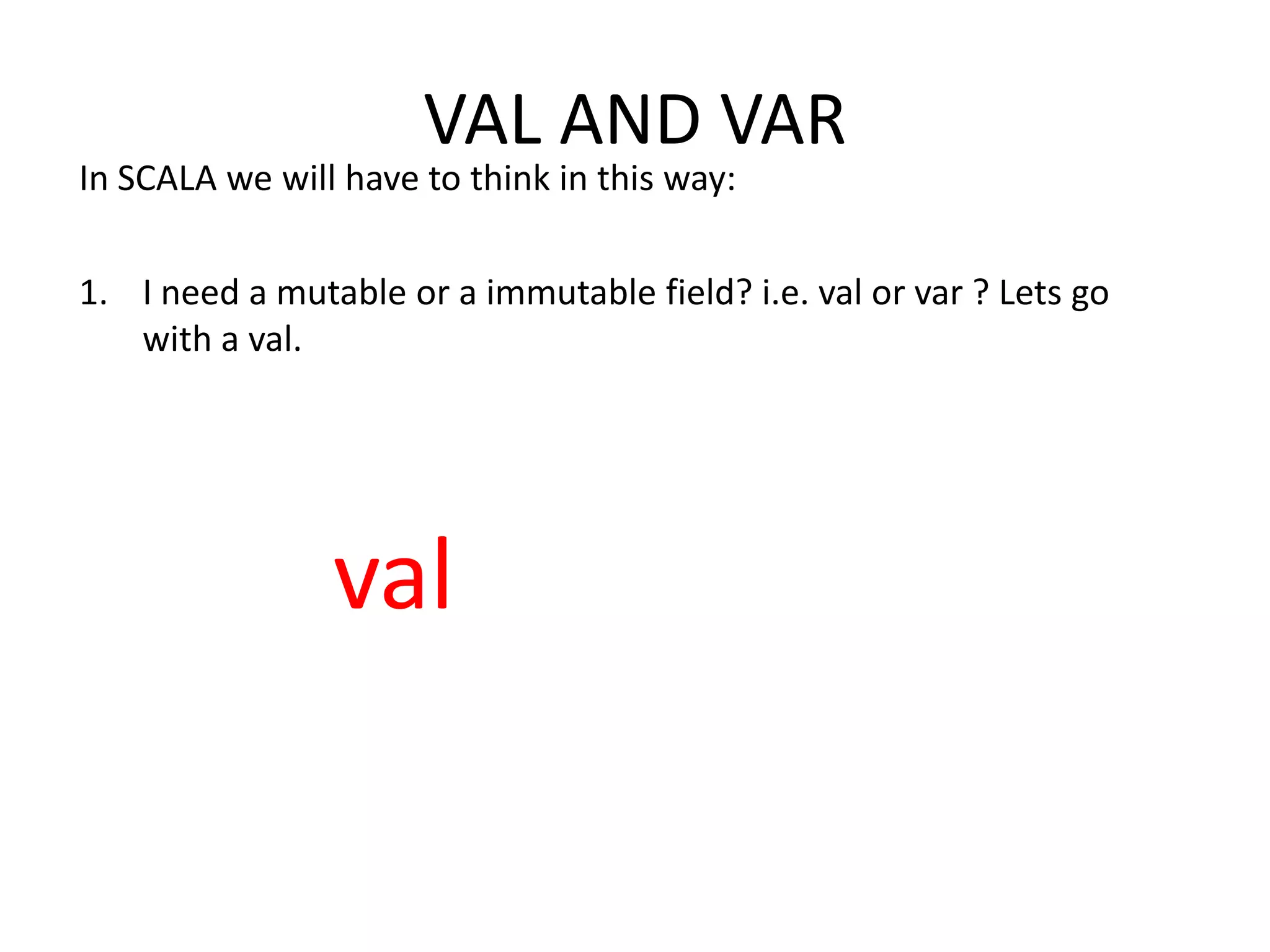
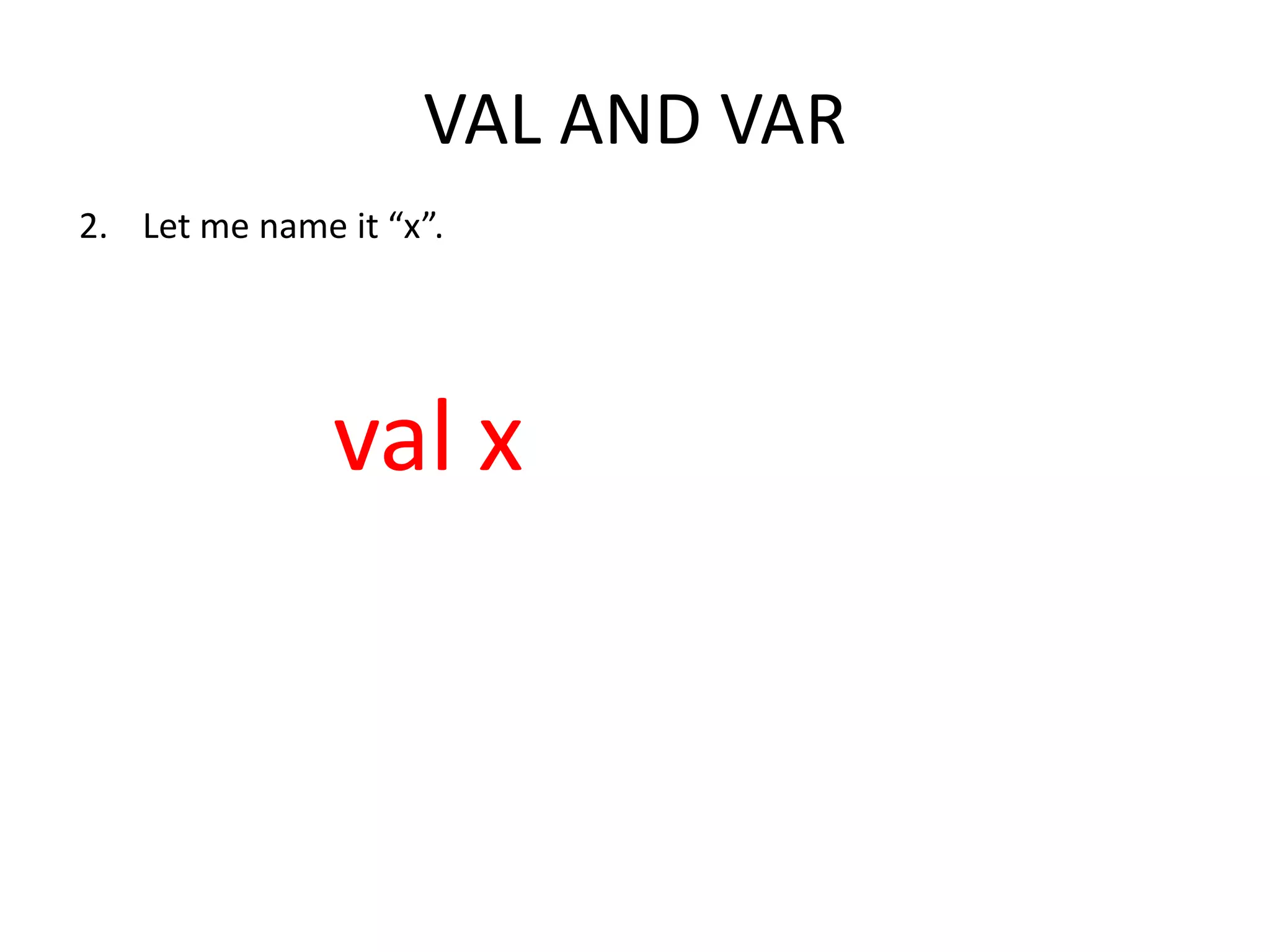
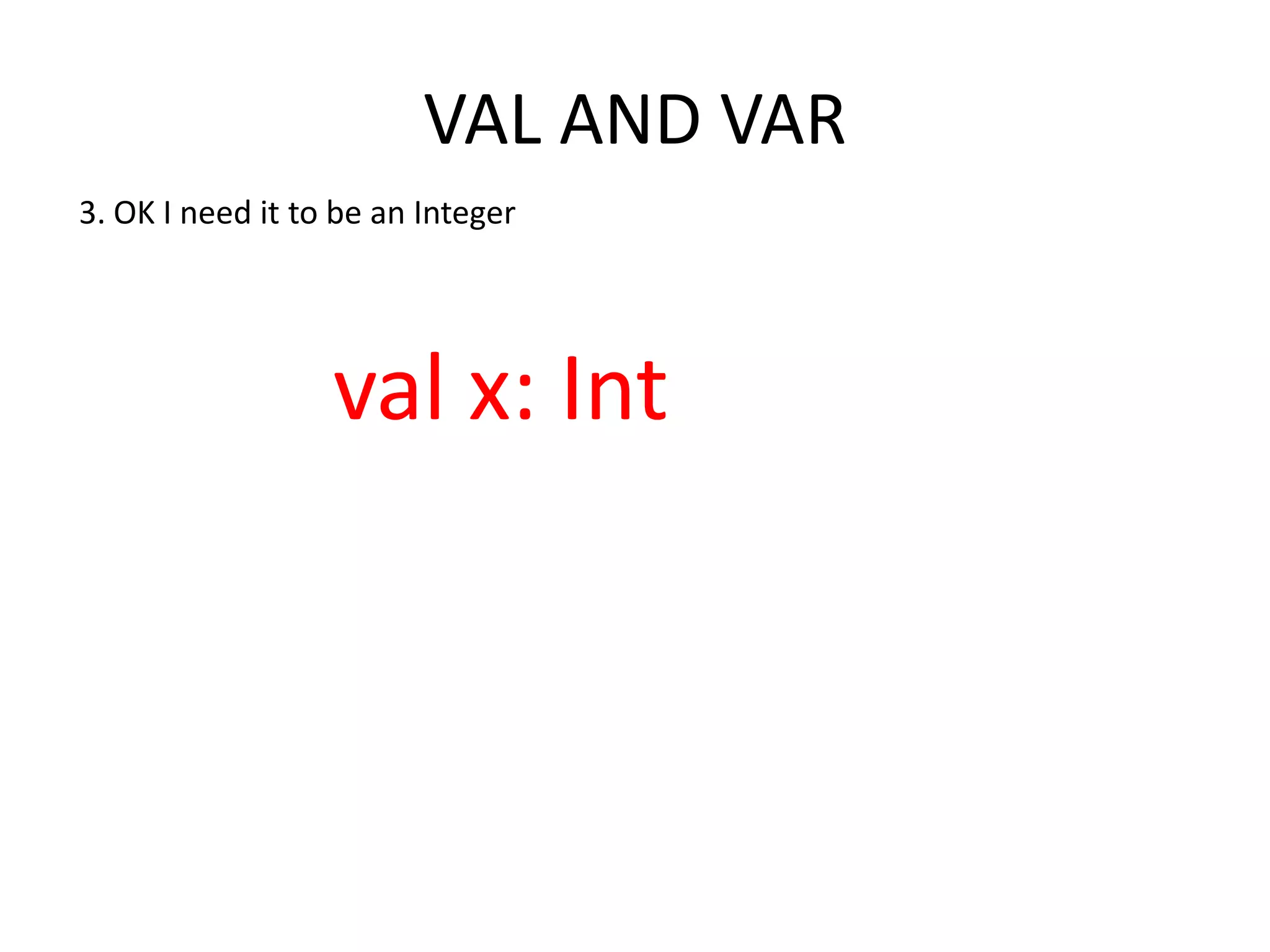
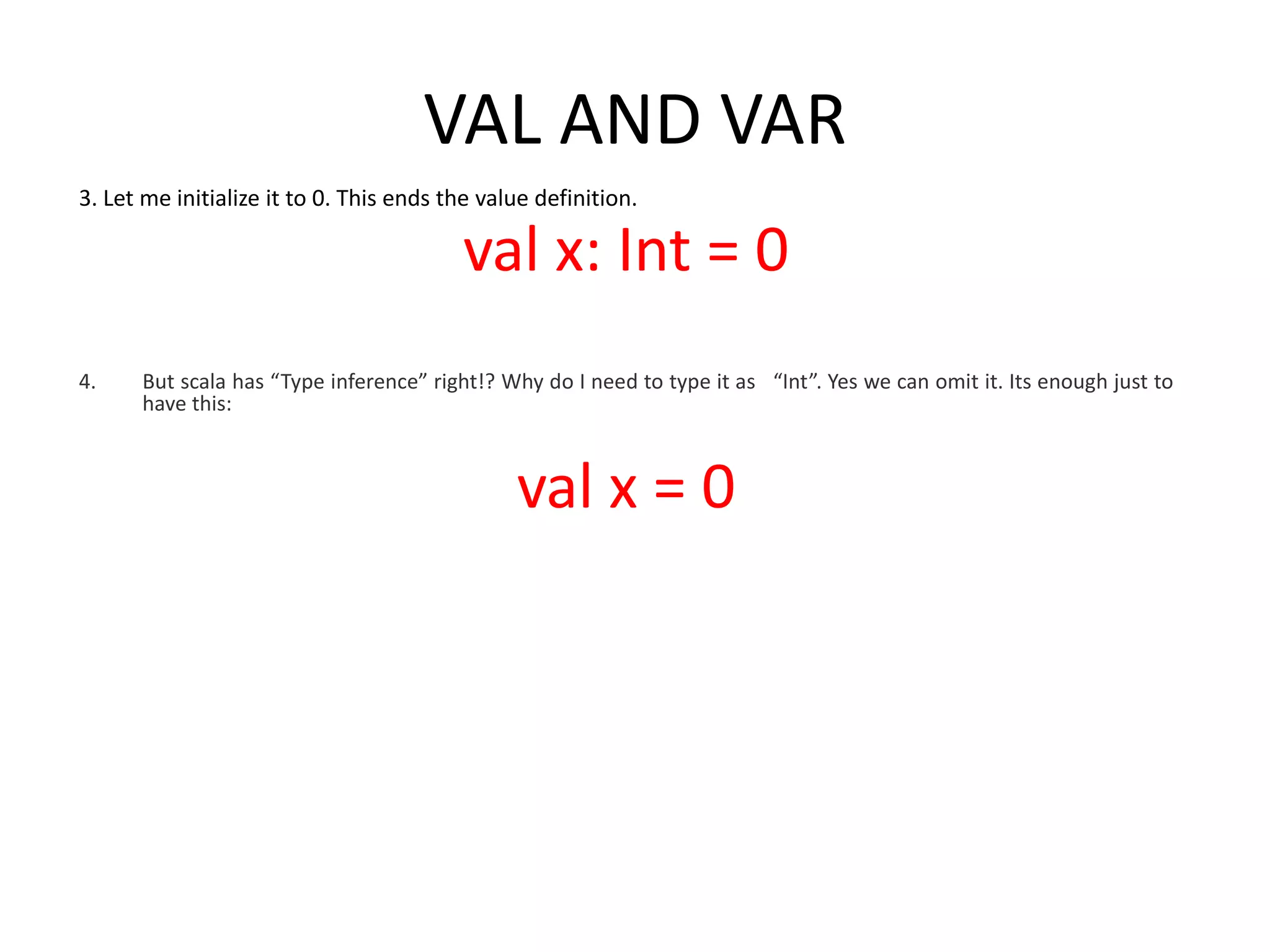
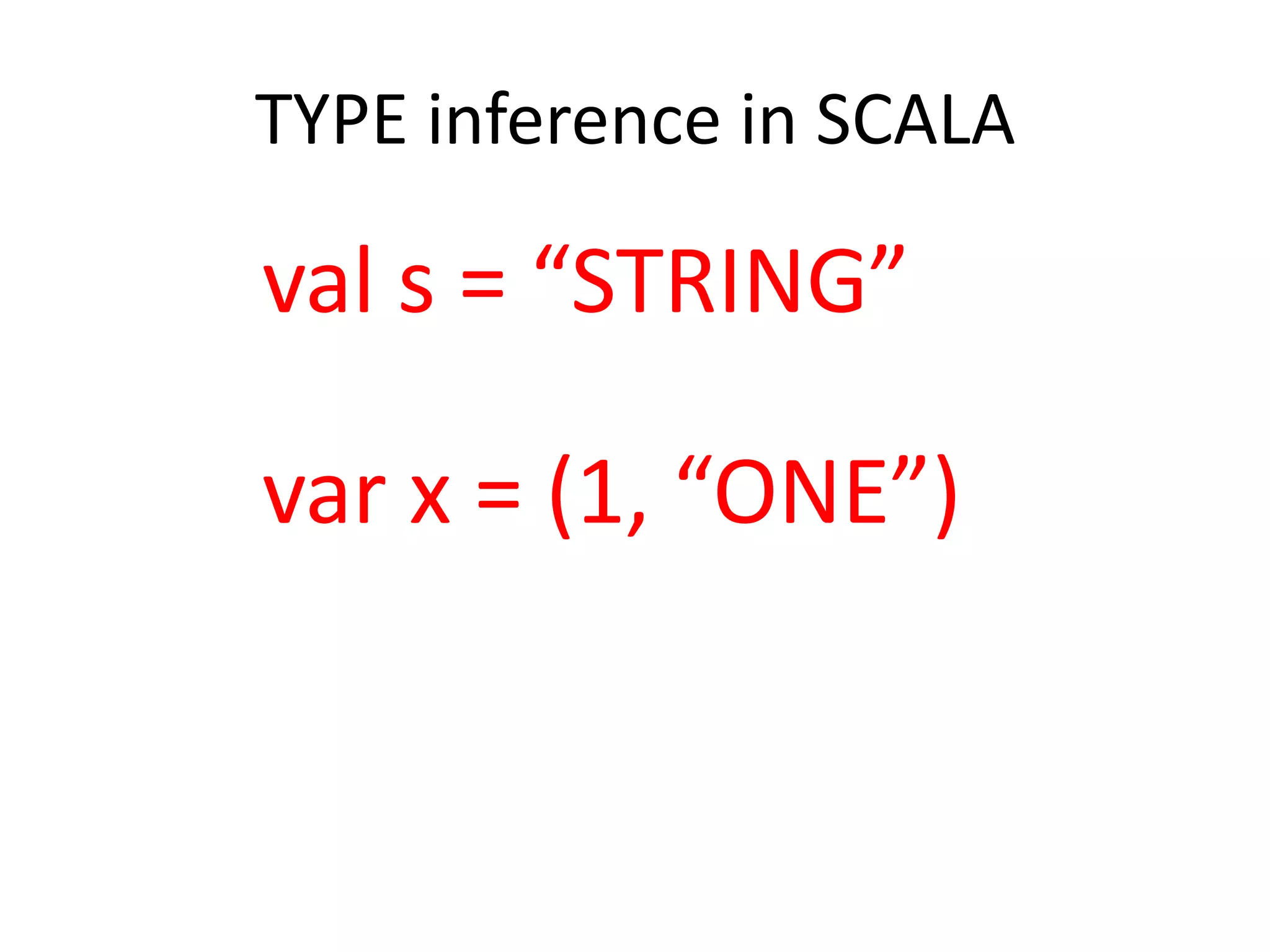
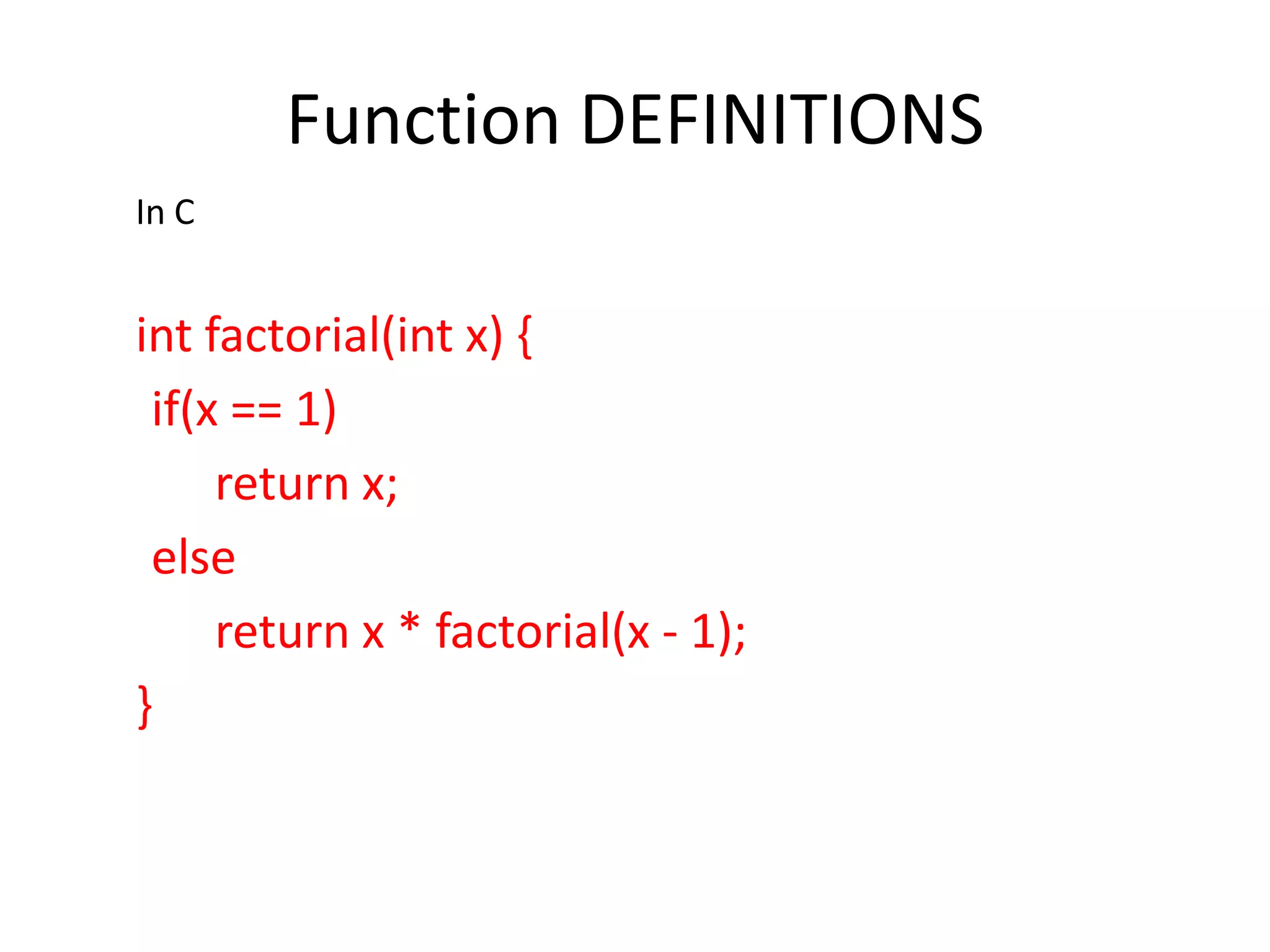
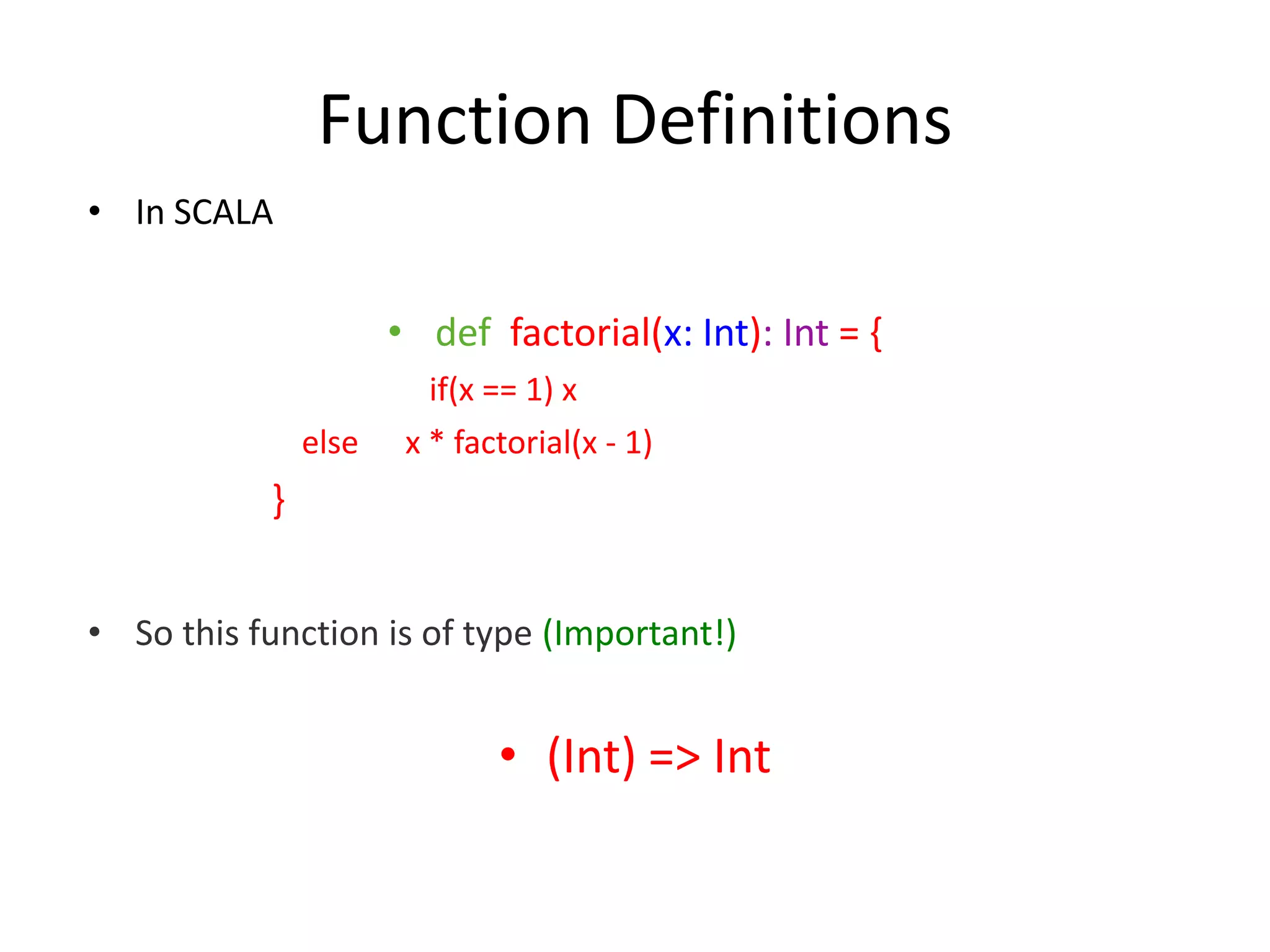
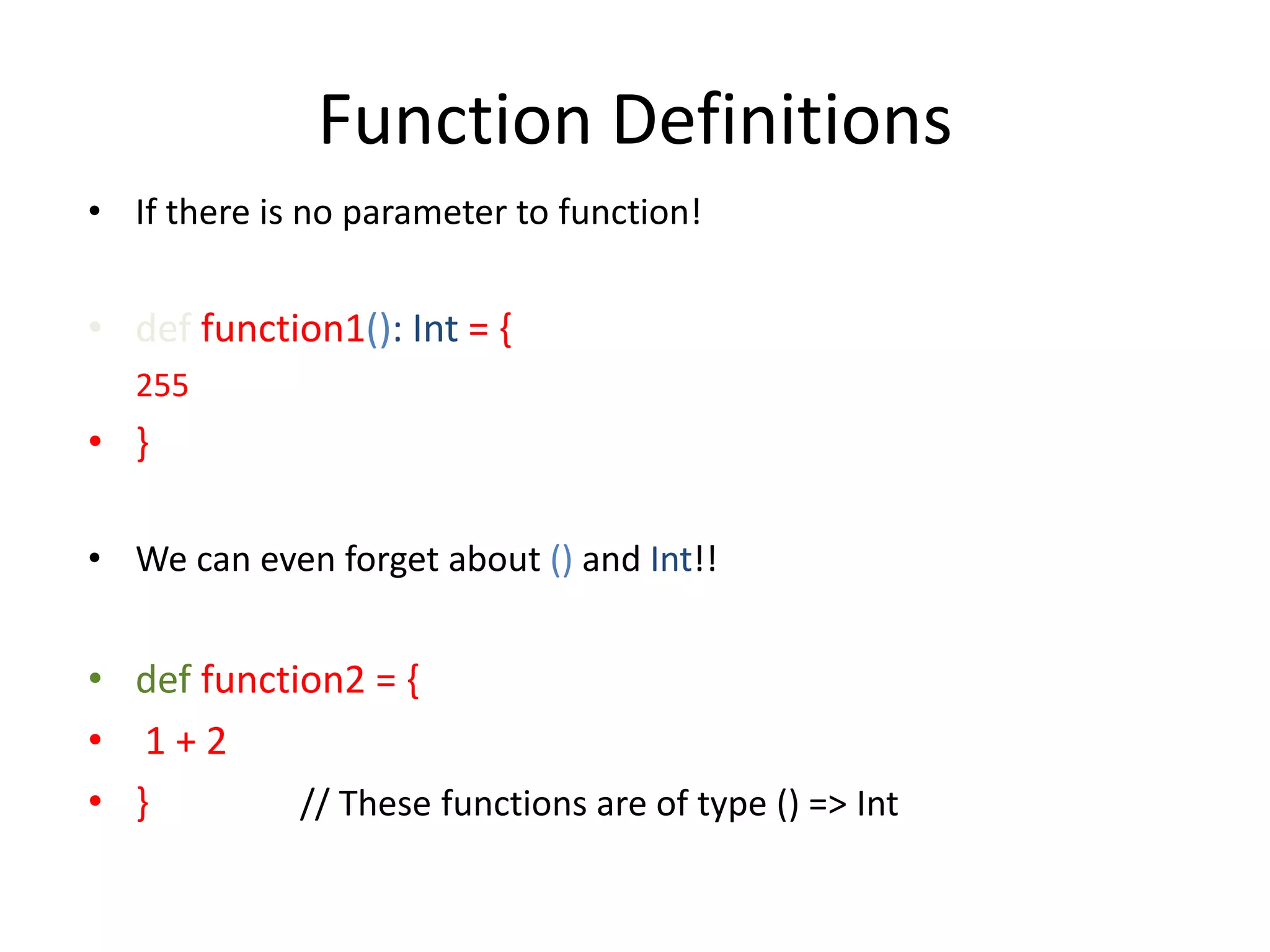
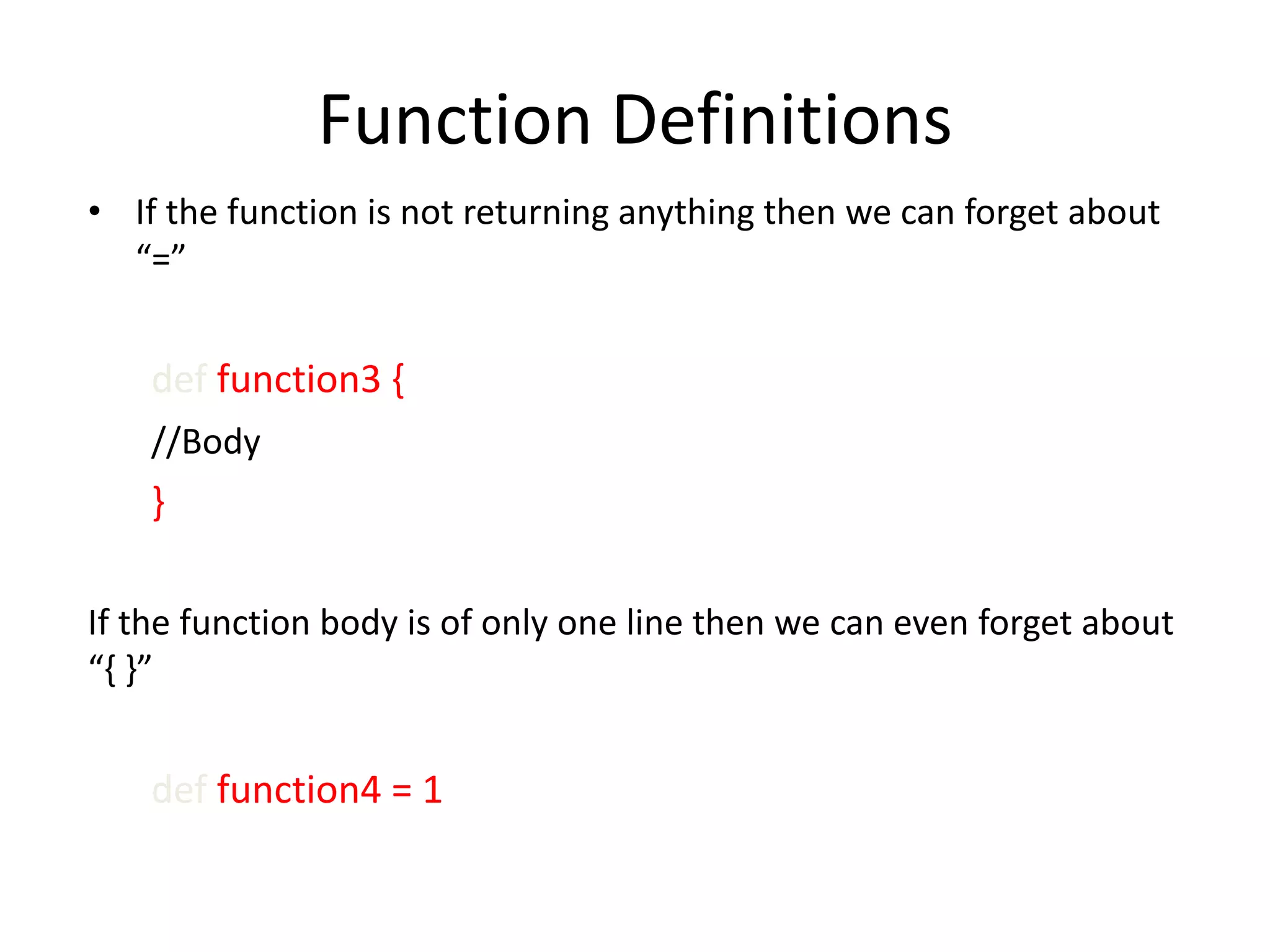
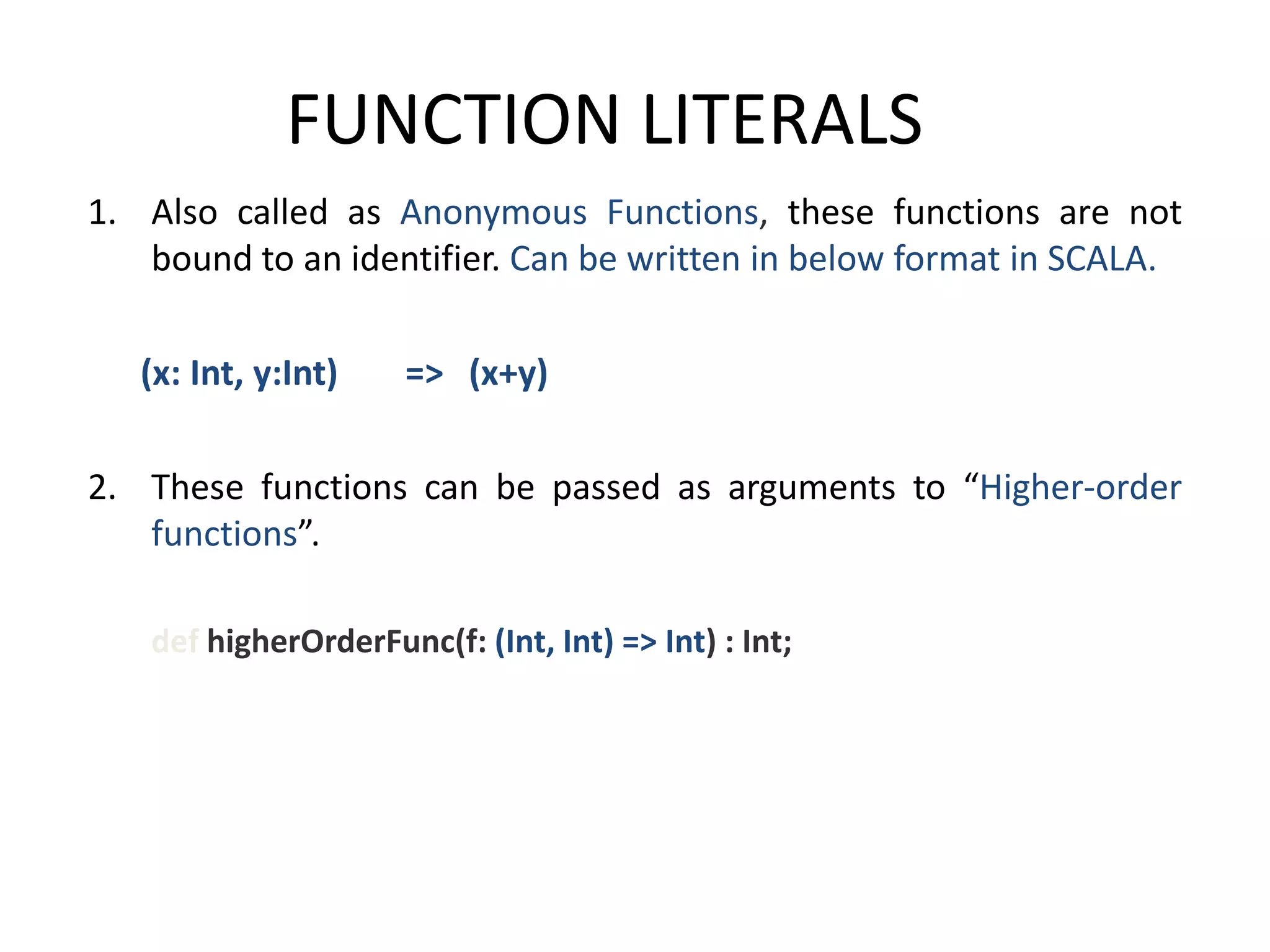
![SCALA IF EXPRESSION
It looks similar to if in C, but SCALAS “if” is an expression. So it
returns a value.
if(!args.isEmpty) args(0)
else “default.txt”
And it can be used inside function calls, and as function bodies.
println(if(!args.isEmpty) args(0) else “default.txt”)
OR
def function(args: Array[String]): String =
if(!args.isEmpty) args(0) else “default.txt”](https://image.slidesharecdn.com/introductiontoscalaforacprogrammer-130323133758-phpapp01/75/Introduction-to-scala-for-a-c-programmer-24-2048.jpg)
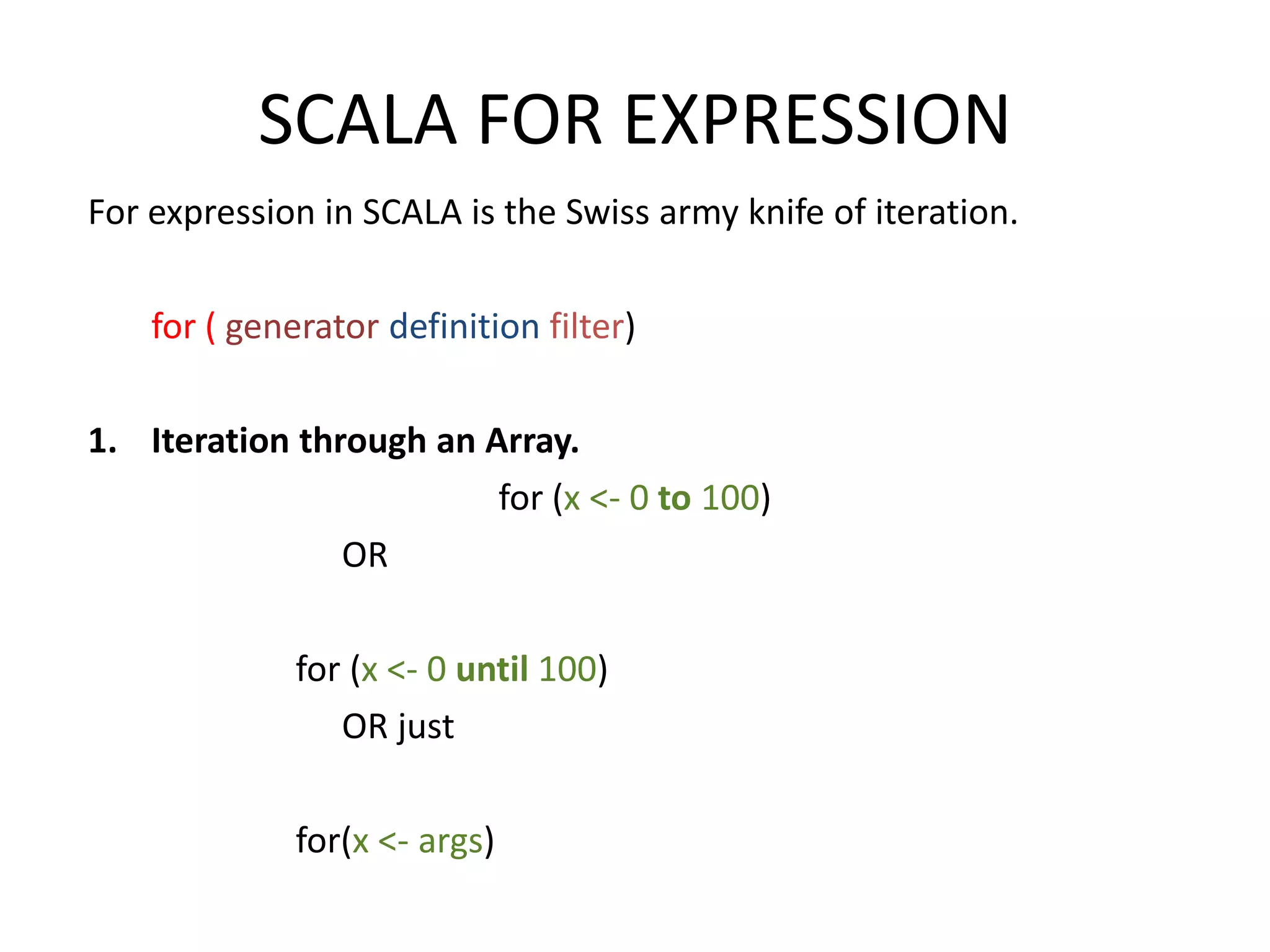
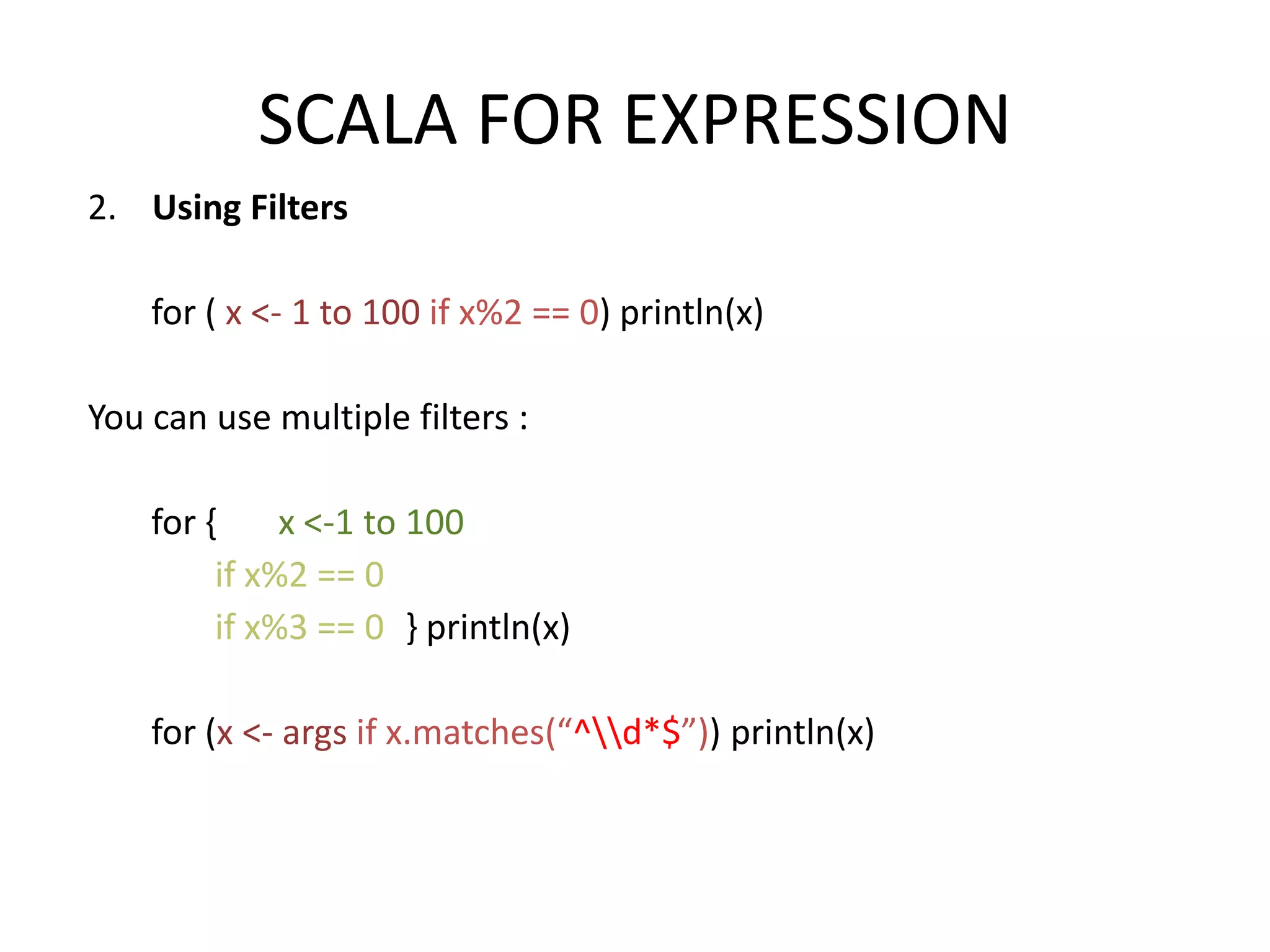
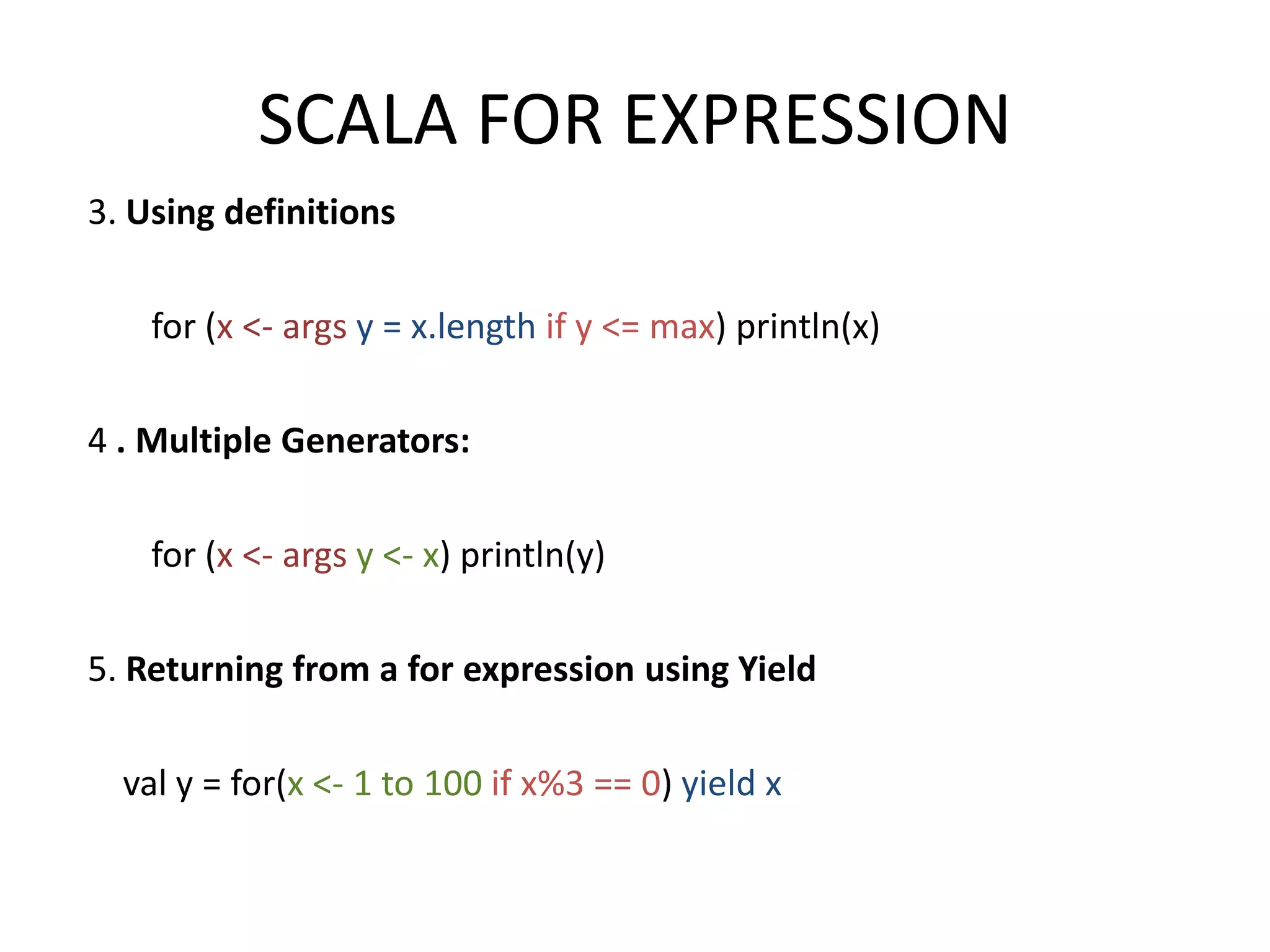
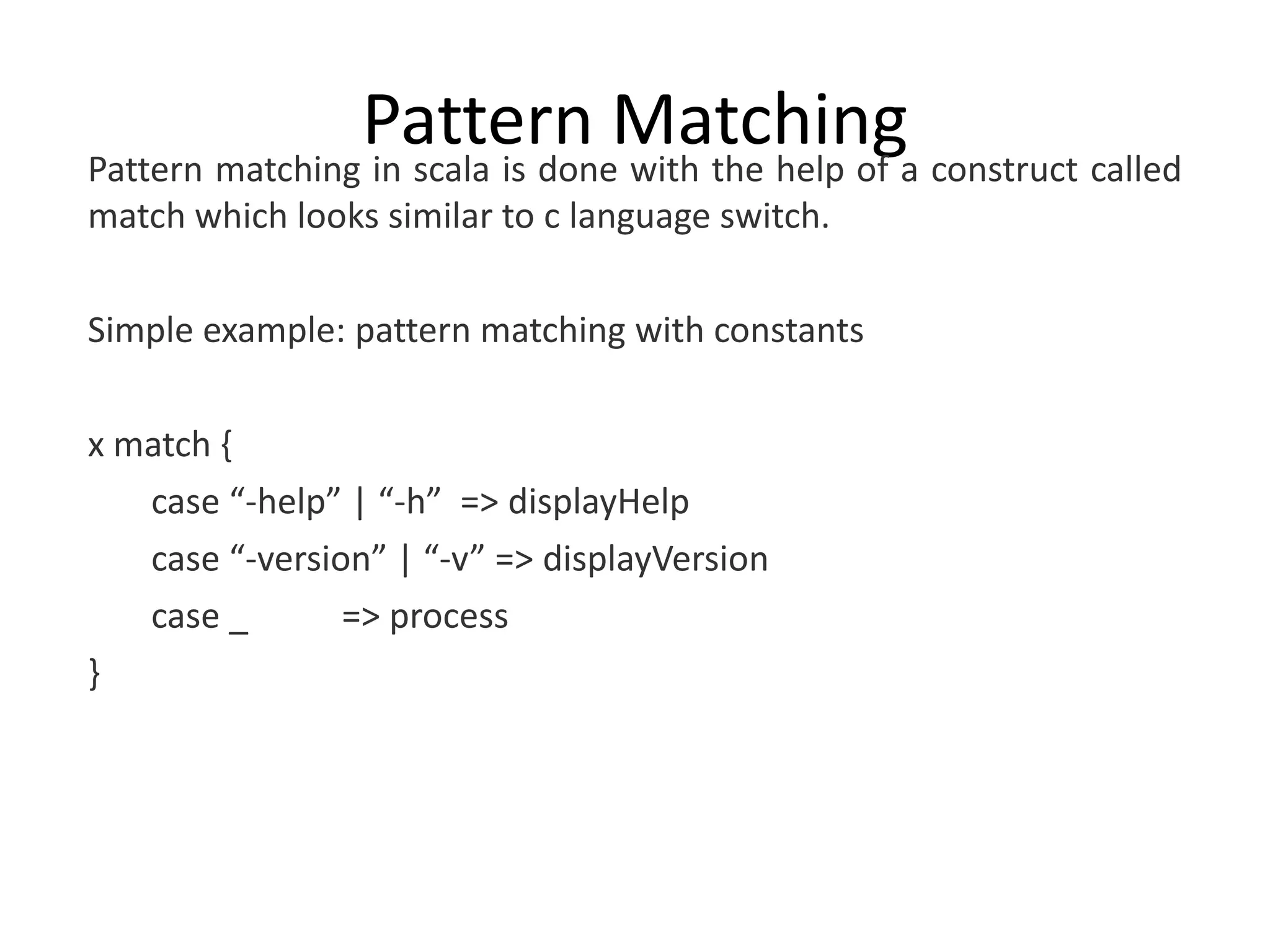
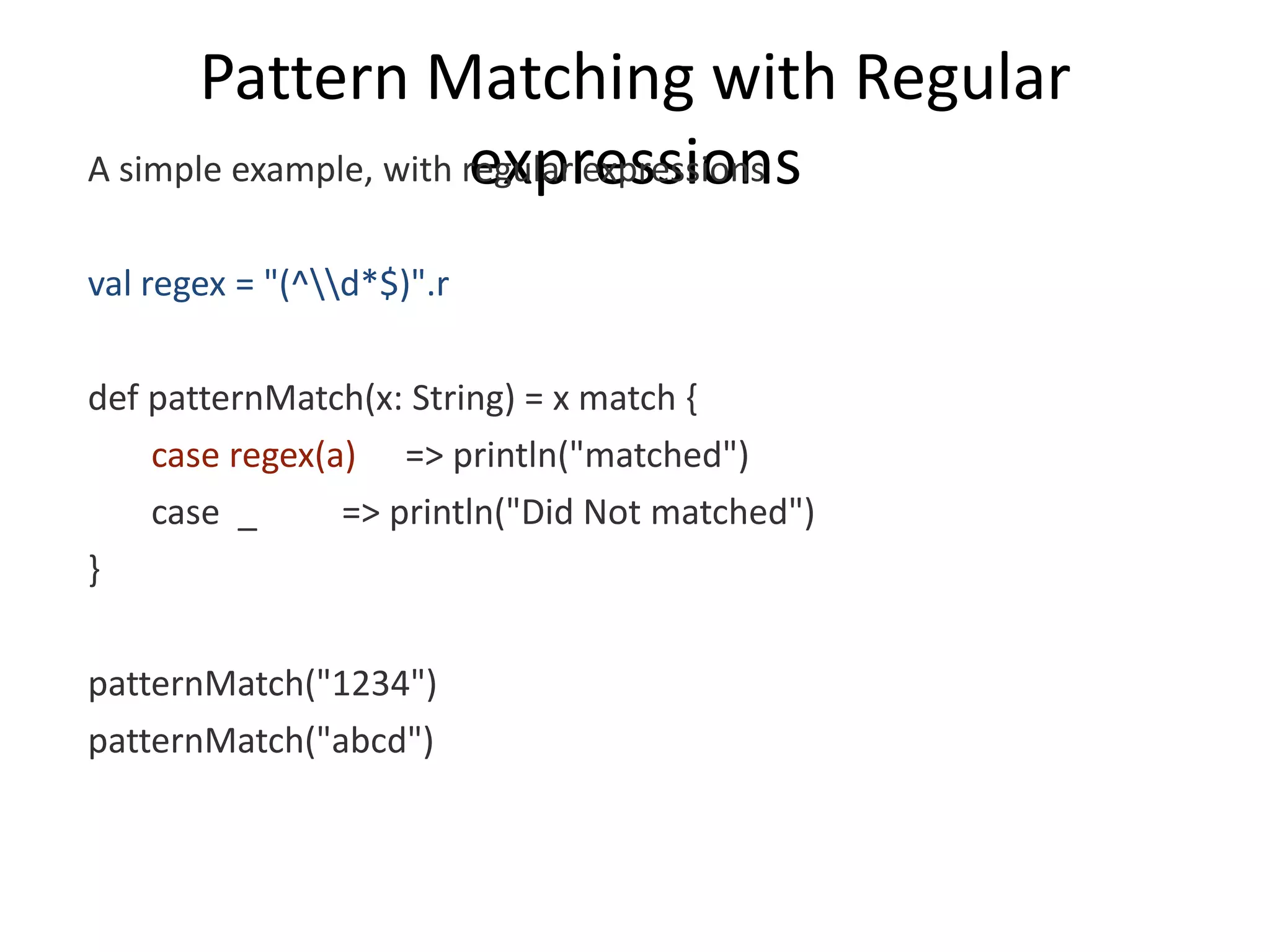
![KEY DIFFRENCES BETWEEN C AND SCALA
Comparable features C SCALA
Programming paradigm Imperative programming Functional and object oriented programming
Compiler Compiled to machine code Compiled to Byte codes
High-level Data-structures No Language support, but libraries are added on Lists[T], Maps[T,M], Set[T], SortedSet[T,M]
top using primary data types
Concurrency With Help of locks and shared-memory With help of actors, share nothing strategy. But
still supports locks and shared-memory.
Scripting No scripting support Scripting support
Memory management Logic has to be built into the application code to Garbage collector frees memory as soon as it
free allocated memory. goes out of scope
Pattern Matching No support Pattern matching with help of case classes,
regular expressions.
Performance Benchmarking Highly optimized C ++ , short run time code is -----------
about 3 times faster.
Debuggability / Maintenance Difficult to debug as everything is mutable Much easier to debug as mostly everything can
be immutable.
Development Longer development time. Most concise language constructs reduce
development time and number of lines of code
by half compared to Java.
Source: Google benchmarks C++, Go, Java and SCALA Performance](https://image.slidesharecdn.com/introductiontoscalaforacprogrammer-130323133758-phpapp01/75/Introduction-to-scala-for-a-c-programmer-30-2048.jpg)
